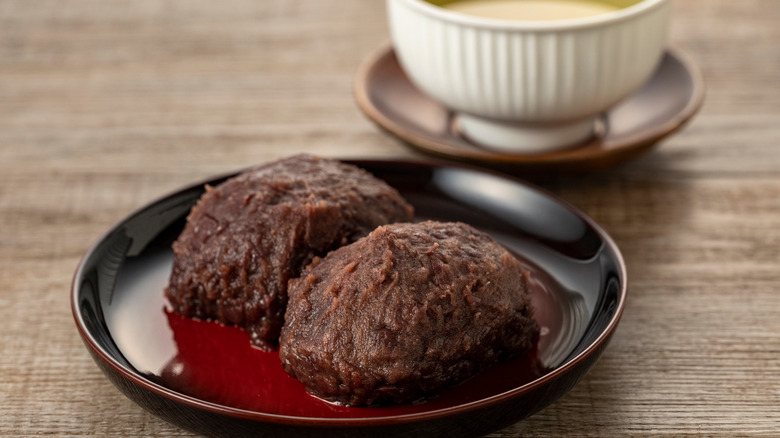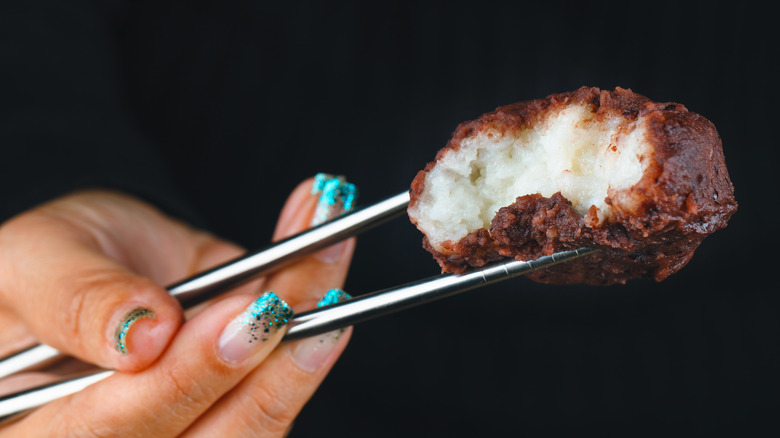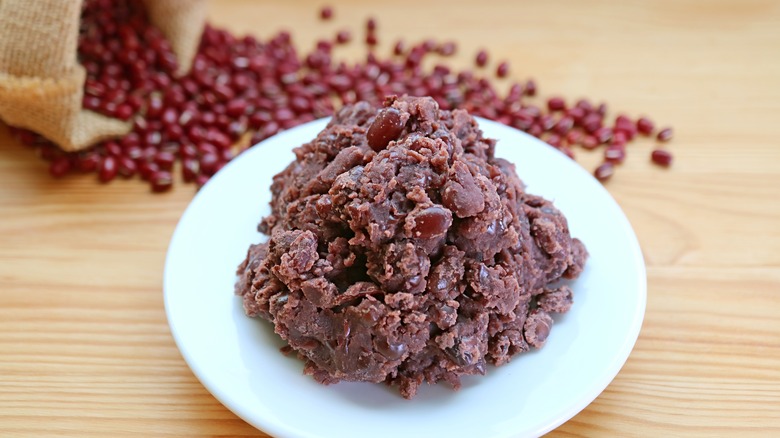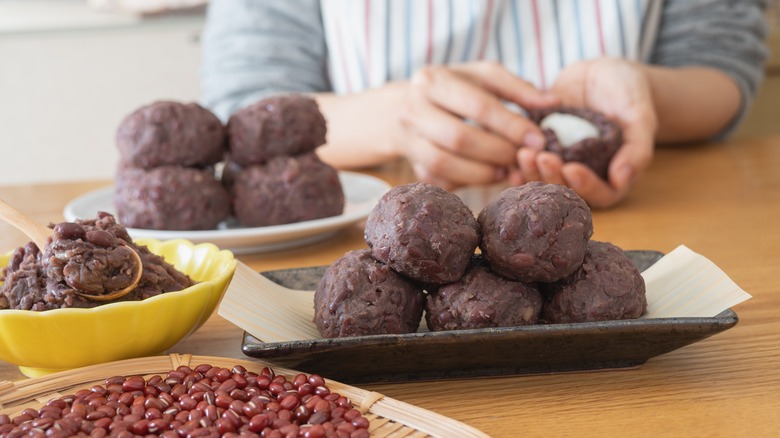Ohagi: The Celebratory Japanese Sweet Made With Mochi
With a texture and taste fit to honor revered ancestors, ohagi, and the closely related botamochi, are eaten during the spring and autumnal equinoxes, a time when the Japanese pause to honor those who came before them. The sweet treats are based on the classic mochi, a Japanese rice cake, with the addition of red bean paste. In fact, enjoying ohagi during the Buddhist holiday of Ohigan has been a tradition for centuries.
During the autumn celebration of Ohigan, the version of the rice treat called ohagi is eaten. The treat is named after the hagi flower, a kind of clover, which blooms in the fall. In spring, botamochi is consumed, which is named after the botan plant, or peony. Ohagi and botamochi are essentially the same glutinous rice treat with one key difference: one has chunky red bean paste while the other contains smooth bean paste. The reason being when the beans are harvested in the fall, the peels remain on the beans, resulting in a chunky paste for ohagi. However, by spring, the beans are dried and the peels can be removed, resulting in a smooth paste used for botamochi.
Whether eaten in spring or fall, with or without smooth red bean paste, the result is the same — a delicious treat worthy of our ancestors.
A long tradition
Many ohagi and botamochi are enjoyed during the spring and fall equinox celebrations, which both last for seven days (three days before and after the equinox). Offering up ohagi and botamochi to ancestors is intended to please them. The red color of the azuki beans signifies purification and avoiding bad luck. Also during these celebrations, botamochi is given to neighbors as a symbol of friendship, which has been done since the Edo period (1603 to 1867).
Since they were first made, the taste of ohagi has changed as more ingredients became common. During the early days of ohagi, they likely would have been unsweetened due to the cost of sugar. Instead, they would have been saltier in taste.
Sweetened red bean paste is still commonly found throughout Japan, as well as Korea and China, where it is incorporated into desserts. Some of the most popular Japanese sweets that use red bean paste, or anko, include daifuku mochi and the quintessential street food taiyaki (fish-shaped pastries).
A few simple ingredients
Only a few common ingredients are used to make ohagi and botamochi: a blend of Japanese white rice and glutinous rice, salt, and red bean paste. Optional ingredients include additional sugar and sesame seeds for coating. Sugar can already be found in the red bean paste, which has been made from boiled azuki beans that have had sugar added to give the paste sweetness.
While using rice balls is the most common way to make ohagi and botamochi, there are other variations. Kinako is made with soybean flour and sweetened with sugar. Another version, Kurumi, is made of walnut flour and mixed with sugar.
Though it's popular all over Japan, ohagi is especially popular in Kyoto where azuki beans are grown. In areas where azuki beans are not as common, soybean flour is often used to create the treat. While similar to mochi, ohagi has red bean paste wrapped around the rice ball that has been shaped by hand.
How ohagi is made
Most of the work of creating ohagi involves turning the cooked rice into a paste and then forming balls with it. But one way to cut down on the work is by using a rice cooker to make the rice. While the rice cooks, the red bean paste can be hand rolled into small spheres, each about the size of a ping pong ball. After the rice is done cooking, it can be placed in a wooden bowl and then pounded until it becomes a sticky paste, which takes about 10 minutes.
To prevent the sticky rice from getting stuck to your hands, a tip is to dip your hands in lightly salted water. The rice should be formed into balls that are about half of the size of the red bean paste balls. Finally, use your hands to flatten the red bean paste into small sheets to be wrapped around the rice balls. Ohagi is best served fresh because if it's placed in the fridge, they will lose their softness — the texture is an essential part of enjoying the treat. However, ohagi can be frozen for up to a month and then defrosted in the refrigerator before being offered to your family, friends, and neighbors.



